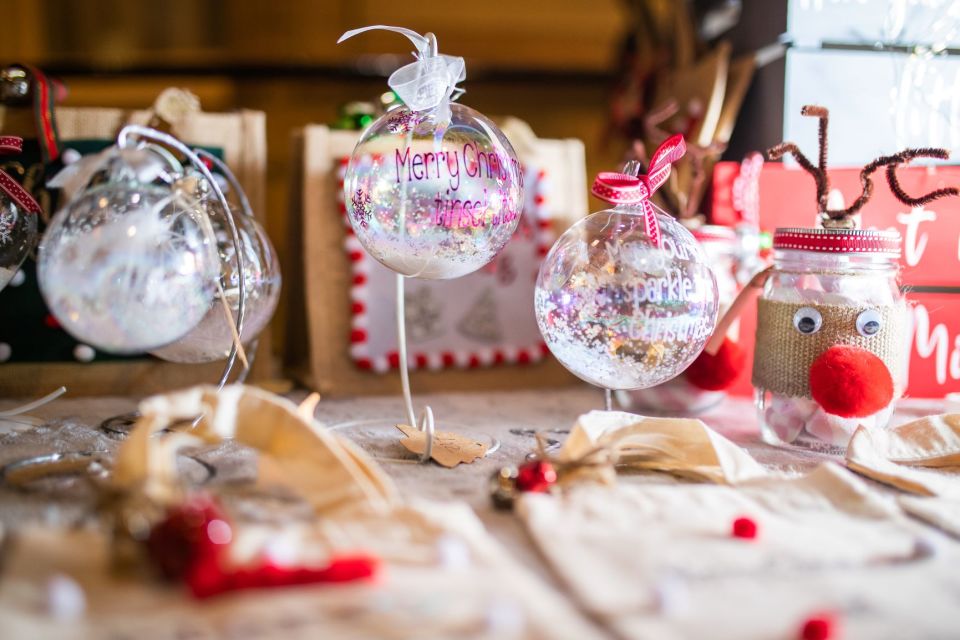How to have a sustainable Christmas
By Bruntwood

I think we’d all agree that Christmas can be a stressful time. All those decorations to put up, presents to wrap and food to plan. On top of that, how many of us can say the way we do Christmas is really sustainable? It’s a lot to think about, but don’t worry because we’ve got seven handy hints right here to make your Christmas greener.
Experience is key - Instead of buying a physical gift which someone might struggle to find a use for, why not think about gifting an experience? From glamping or dim sum making, to indoor skydiving or a cocktail masterclass, there’s plenty of choice to put a smile on a loved one’s face without reaching for the socks or bath bombs. Be creative. As well as creating less waste, it’s also a good way to help you think about a gift which is more personalised, and what better way to show someone you care?
Waste not, want not - The amount of food we throw away at Christmas can be significant, and food waste is very damaging for the environment. Lots of energy, water and fuel is used in the production, transportation, storage and cooking of food, so to waste that food means to waste those resources. There are a number of ways to avoid food waste though. You can transform leftover ingredients into other dishes like stews, curries and soups or even use the app Olio to share leftovers with local people. Alternatively, if you’re halfway through a meal and realise you’re suddenly full, you could freeze a portion so you have a ready-made dish for the next time you’re peckish. It might be a good idea to start freeing up space in your freezer by using up what’s already in there before Christmas; that way, you’ll have plenty of room to store fresh food and leftovers.
Close to home - CO2 emissions from planes and lorries that are used to transport food from farm to fork are big contributors to climate change. You can help to reduce food miles by buying food that is produced locally and, where possible, buying fruit and veg which is in season and doesn’t rely on importing, meaning the distance it travels to get to you is greatly reduced. Locally-sourced food is often much fresher for that reason (always a benefit) and has the added advantage of allowing you to support the local economy. Start by finding your nearest Farmers Market to see what’s on offer. It can be a fun festive day out, too!
A Crackin’ Green Christmas - One way to be greener at Christmas is to buy eco-friendly Christmas crackers. There are several different kinds out there: some are made from recycled materials, some contain wooden decorations, and some you can fill yourself to create a personal touch. If you look for an ‘FSC’ label on the box, you will be able to see if the product you’re buying has been certified by the Forest Stewardship Council, which is a non-profit organisation promoting the use of wood, paper and other forest products from well-managed forests and/or recycled sources.
Lighting the way - Think about using LED lights on your Christmas tree and any festive lighting displays you might have. LEDs consume 80-90% less energy than traditional filament bulbs. They also last for around 100,000 hours on average compared to around 3,000 hours for a traditional bulb. The other big benefit is the saving you make on repeat purchases (or lack of) with LEDs; since they’re made to be more durable, you’re less likely to have breakages or bulbs which blow out, leaving you with that extra bit of cash which is always a good thing at Christmas.
Mix up the decs - Putting up our Christmas decorations can really help us to get into the Christmas mood and make our homes feel festive. But quite a lot of the materials used in traditional decorations are unfortunately not the most eco-friendly. Take wreaths, for example. A huge amount of the wreaths sold on the high street are made from plastic and feature glittery adornments. Not only are these less sustainable to produce and dispose of, but they can be extremely harmful to wildlife which may be attracted to them if hung outside. As an alternative, you could opt for a rag wreath made entirely from fabric. These can be used year after year and are much kinder to the environment. As a fun yuletide activity, why not try a rag wreath handicraft class, where you can make your own wreath to take home. These workshops are great for old and young alike. Our retailers Stitched Up offer workshops at some of our offices throughout December, and they’re always a hit!
Preloved party frocks - Christmas is party season, which can mean a lot of outfit planning and quite a few items that, let’s face it, only get worn once. Why not try to source your Christmas garments through charity shops to find pre-loved clothes that you can give a new home to. Of course, once you’ve done the rounds in your fabulous frocks, you can return them to the shop to be used and sold again. That way, not only are you doing your bit for the environment but the charity will be making that little bit extra, which is always a good thing. It’s also a good idea to try and avoid sequins; they’re made from PVC and currently there aren’t any sustainable alternatives.
These are just a few ideas to get you started, but there are endless ways of being more sustainable at Christmas and the main thing is to do what works for you - that way, you’re more likely to stick to it. If you have any more suggestions, we’d love to hear them as we’re always looking for ways to be greener where we can. Why not let us know on Twitter @Bruntwood_UK.